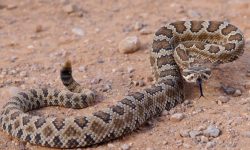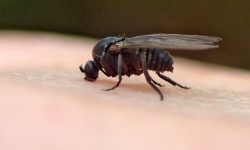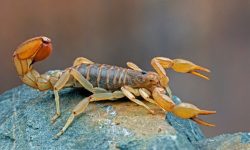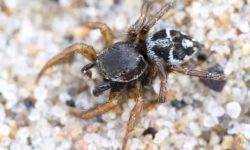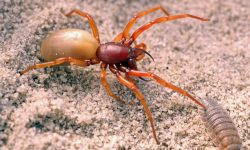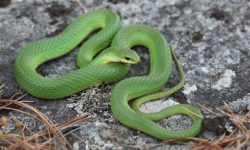In the vast expanse of North America, the Black and White Dragonfly emerges as a symbol of both grace and resilience. With its elegant wings adorned in contrasting colors, it navigates diverse landscapes, from the towering mountains to the expansive prairies.
In the dense forests of the Pacific Northwest and the sprawling marshes of the Everglades, this majestic insect finds its home. Continue reading the article below to learn about the characteristics and identification of 9 common black and white dragonfly species, that can be found in North America.
Different Black and White Dragonfly Species
Eight-Spotted Skimmer
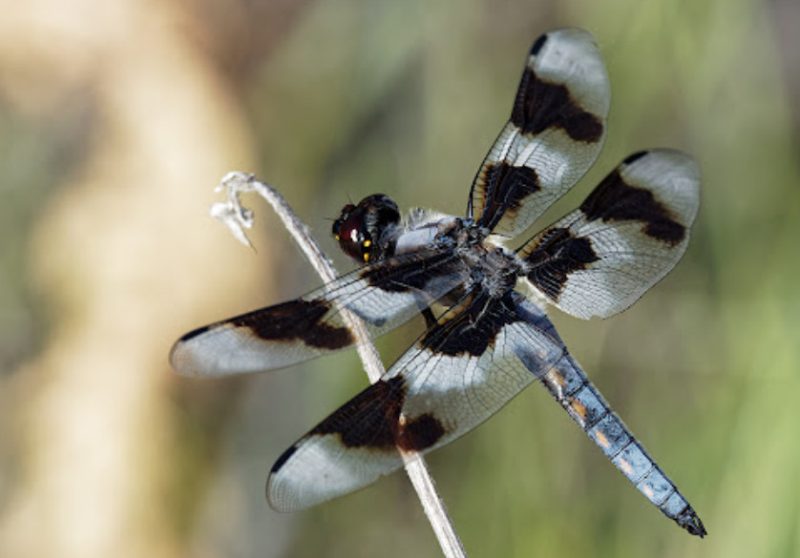
Distinct from many other dragonflies, the Eight-spotted Skimmer (Libellula forensis) is called for the black and white dots on its forewings and hindwings that are present on both male and female individuals. With a characteristic white body, they can reach a maximum size of 50mm.
They live only in the regions west of the Rocky Mountains; they are not found inside the range. In damp valleys where there are plenty of mosquitoes and insects to feed on, these dragonflies are usually seen. Their wings are easily recognized by the alternating white and black markings.
Desert Whitetail
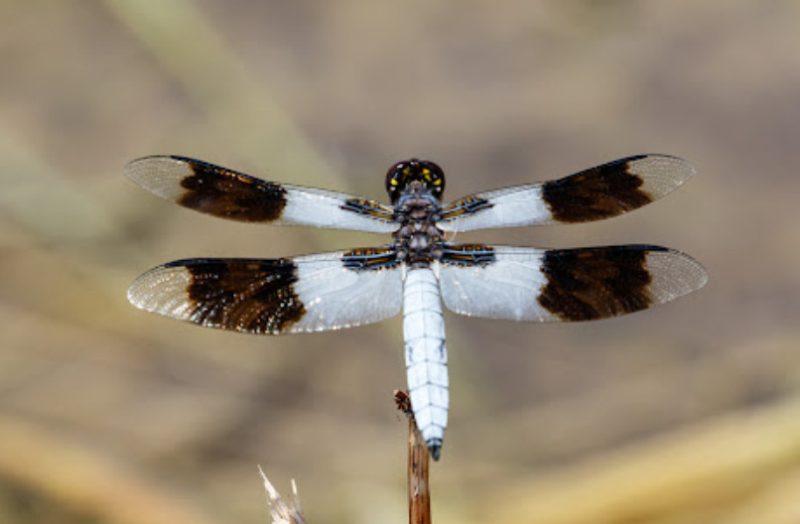
Desert Whitetail dragonflies (Plathemis subornata) are found across the Southern US states, thriving near water sources in deserts. Despite living in some of the warmest parts of North America, they are only active until September. This species is identifiable by its above-average size, growing up to 3 inches.
Desert Whitetails have white translucent wings with dark brown to black patches and transparent wing tips. Their bodies are predominantly white and light gray, making them distinctive in their arid habitats.
Plateau Dragonlet
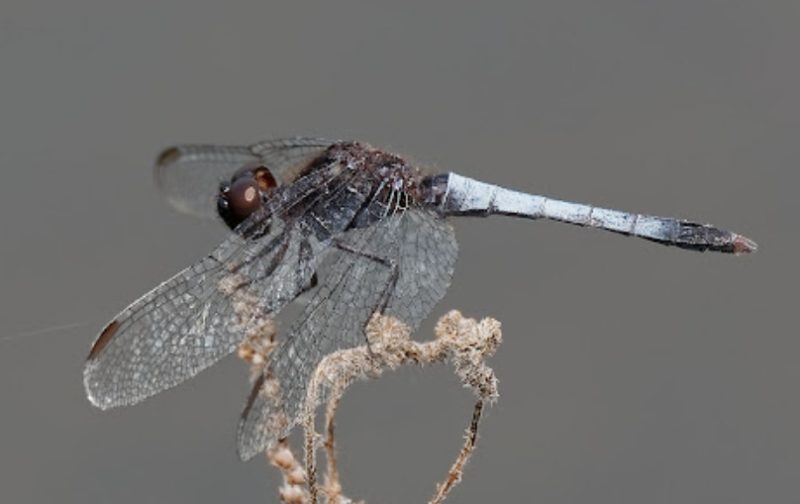
The average length of Plateau Dragonlets (Erythrodiplax basifusca) is 50 mm. Among dragonflies in North America, they are distinct due to their completely translucent wings. Its mostly white belly, along with its brown-gray shoulders and dark brown head, help to identify this species.
In North America, Plateau Dragonlets are usually found around ponds, lakes, pools, streams, and rivers. These habitats offer the conditions they need to survive and feed.
Common Whitetail
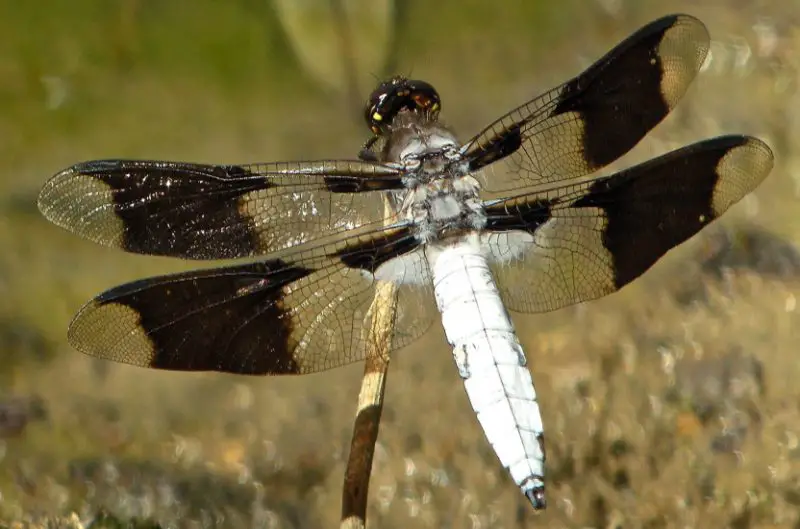
The male Common Whitetail (Plathemis Lydia) gets its name from its white body. The bodies of male dragonflies are white, with translucent wings that are partially black. Females have transparent wings with patches of dark brown color and a brown body with yellow markings running along the sides.
Across North America, this species can be found in a variety of settings, mostly beside rivers and ponds. They consume tiny insects, like mosquitoes, for food. Common Whitetails, which reach an average size of two inches, are more prevalent in fields and valleys near water sources than they are at higher elevations.
Widow Skimmer
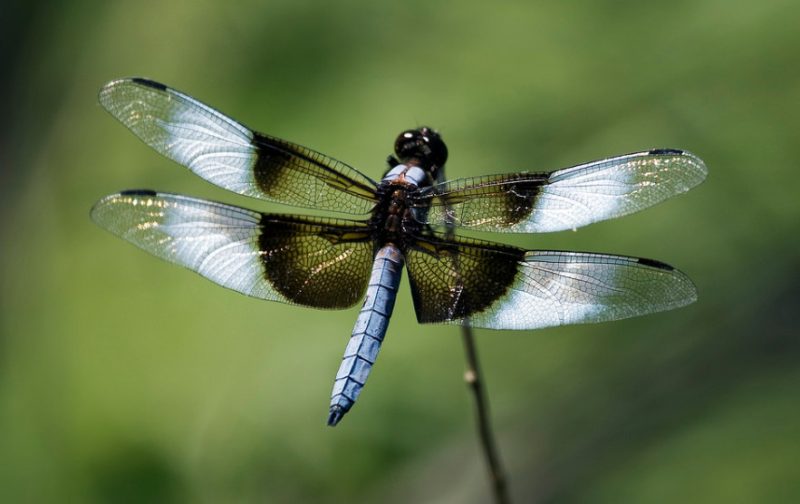
Widow Skimmers (Libellula luctuosa) are recognized by their blue metallic body color. Males have a large, mostly dark head. Females exhibit a dark brown to black body with yellow coloring on the sides. Both genders possess transparent forewings and hindwings. Widely distributed across North America, they are found in both the US and Canada but have a limited presence at high altitudes.
This species feeds on mosquitoes and is typically seen around lakes, streams, and ponds. Widow Skimmers, like Common Whitetails, thrive near water sources in various habitats.
Twelve-Spotted Skimmer
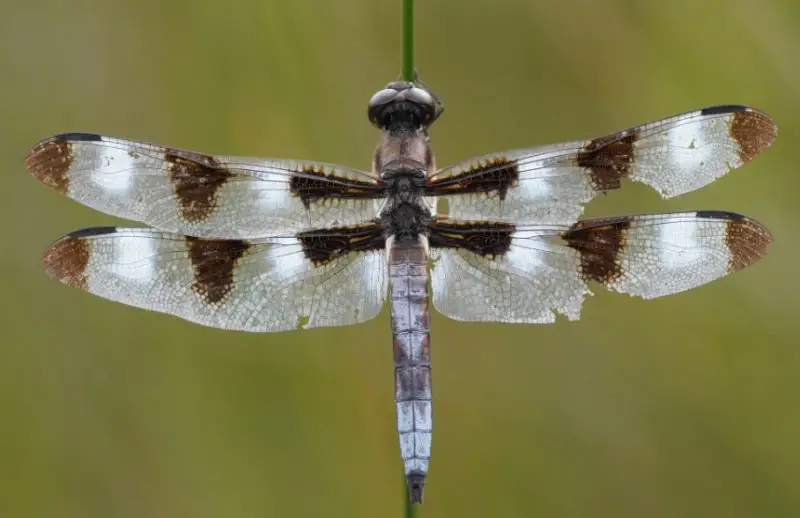
The Twelve-spotted Skimmer (Libellula pulchella), which is common throughout Canada, is distinguished by its big body, reaching a maximum length of 2 inches. The many white dots on the wings of this species give it its name. The forewings and hindwings of male Twelve-spotted Skimmers are translucent, bearing spots that alternate between black and white.
They also have a black head and a lower body colored white. The females lack the white dots found on the males’ bodies and have translucent wings with dark brown to black patterns instead. The ladies’ bodies also have yellow bands showing on their sides.
Chalk-Fronted Corporal
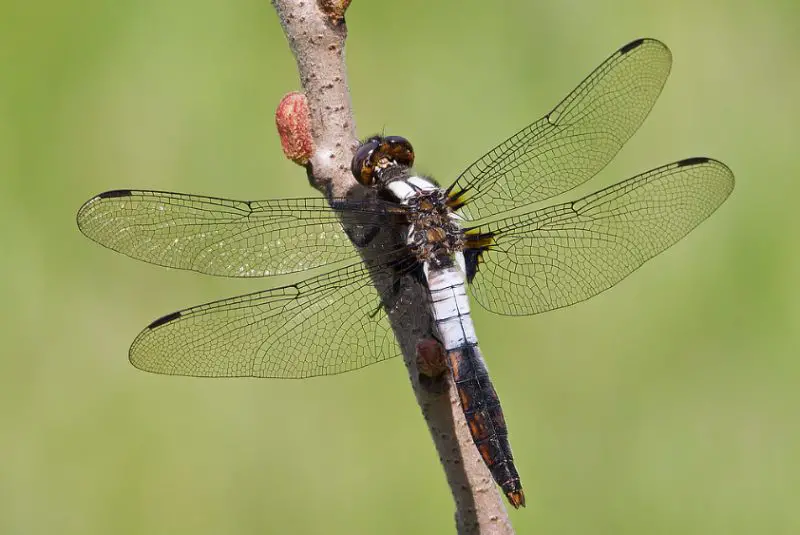
Native to portions of Southern Canada and Northern US territory, the Chalk-fronted Corporal (Ladona julia) is a species of wildlife. The female dragonflies of this species are initially orange and pink in color. As they get older, both sexes darken; mature males become almost black, while mature females become dark brown.
Chalk-fronted Corporals consume other biting insects and mosquitoes as food. The white patches on the species’ body—two behind the head and, in males, a white region behind the shoulders—give rise to the species’ name. The species can be identified because of these distinguishing characteristics.
White Corporal
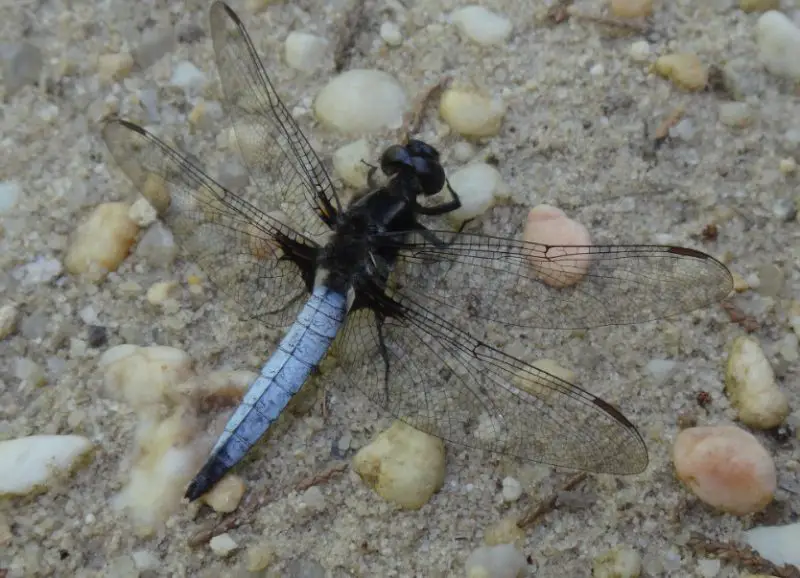
The white patches on the males’ bodies give them the moniker “White Corporals” (Ladona exusta), whereas the females are nearly entirely dark brown to black. The wings of both sexes are translucent.
This species is widespread in Eastern North America and is usually found close to bodies of water, where it forages for tiny insects like mosquitoes and mites.
How does the presence of the Black and White Dragonfly differ across North American regions?
The presence of the Black and White Dragonfly can vary across different regions of North America due to a combination of factors such as climate, habitat suitability, and ecological conditions. In some regions, particularly those with abundant water sources such as wetlands, lakes, and rivers, the Black and White Dragonfly may be more prevalent. These areas provide suitable breeding grounds and food sources for the dragonfly larvae and adults.
Conversely, in arid or mountainous regions where water sources are scarce or temperatures are extreme, the presence of the Black and White Dragonfly may be less common or restricted to specific microhabitats. Additionally, human activities such as habitat destruction, pollution, and urbanization can also impact the distribution and abundance of species across different regions.
Overall, while the Black and White Dragonfly can be found across North America, its presence and abundance may vary depending on local environmental conditions and human impacts.
What is the meaning of a black and white dragonfly?
The meaning of a black and white dragonfly can vary depending on cultural and personal interpretations. However, here are some common symbolic meanings associated with black and white dragonflies:
Balance and Harmony
The combination of black and white colors often symbolizes balance and harmony, representing the integration of opposing forces or dualities in life.
Transformation and Change
Dragonflies are known for their transformation from nymph to adult, and the black and white colors may signify the phases of change or transition in one’s life journey.
Spiritual Growth
Black is often associated with mystery and the unseen, while white represents purity and enlightenment. Together, they may symbolize spiritual growth and the journey towards higher consciousness.
Yin and Yang
In Eastern philosophies, black and white represent the concept of Yin and Yang, symbolizing the interconnectedness and balance of opposite forces in the universe.
Protection and Guidance
In some cultures, dragonflies are believed to be spiritual messengers or protectors. A black and white dragonfly may be seen as a sign of guidance and protection during times of uncertainty or change.
Overall, the meaning of a black and white dragonfly can be deeply personal and subjective, influenced by individual beliefs, experiences, and cultural backgrounds.

